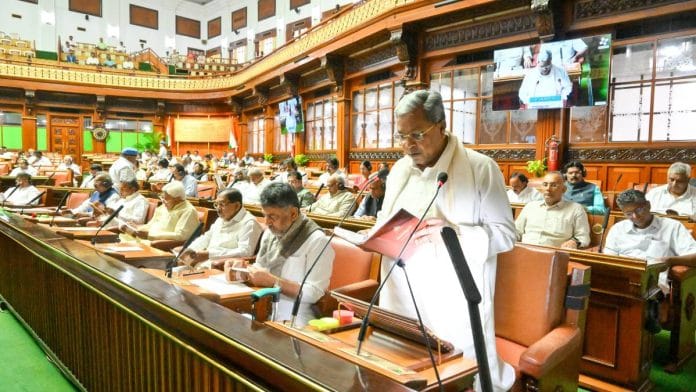Karnataka’s proposed Misinformation and Fake News (Prohibition) Bill, 2025, is poorly drafted and replete with structural infirmities. It is also at odds with existing central laws and its constitutional validity is questionable. Let’s see how.
Sidestepping safe harbour
The bill deprives social media intermediaries of their statutory immunity from state persecution for user-generated content, a legal protection commonly referred to in internet law as ‘safe harbour’. India’s nodal Information Technology Act, 2000 (IT Act) provides for safe harbour protections and allows social media companies to host user content with conditional immunity, within a clearly defined legal framework. In contrast, Karnataka’s fake news bill proposes to hold social media companies accountable for violating any provision of the proposed law.
The bill envisions a government-appointed Fake News on Social Media Regulatory Authority, with sweeping powers to preemptively block or ban content it deems illegal. However, it does not clarify how these powers will sync with the safe harbour protections under the IT Act. Without safe harbour protections, social media companies could face a deluge of criminal penalties for content that is difficult to monitor and filter, such as superstitions or unscientific claims, both deemed illegal under the bill.
The Authority’s blocking powers create a parallel mechanism to the content-blocking procedures already prescribed under the Centre’s IT Act. The lack of standard procedural safeguards, such as the need to notify penalised parties or offer them a fair hearing, further disregards the minimum standards set by the IT Act. That law limits content blocking to specific grounds such as public order, sovereignty, and integrity of India, friendly relations with foreign states, or preventing incitement to an offence — all of which correspond to the restrictions under Article 19(2) of the Constitution.
Also read: Karnataka’s new misinformation bill can penalise social media users for honest mistakes
Constitutionality in question
Lawmaking in India seems stuck in a time loop: each new attempt to regulate online misinformation repeats old constitutional mistakes. In the past two years, multiple well-intentioned policy interventions have tried to crack the whip on misleading online speech – including the now-withdrawn Broadcasting Services (Regulation) Bill, the Fact Check Unit under the Information Technology (Intermediary Guidelines and Digital Media Ethics Code) Rules, 2021, state-funded media monitoring centres in Maharashtra, Tamil Nadu, and Punjab, and even the Maharashtra Special Public Security Act, 2024. Most constitutional law experts agree that these efforts exceed the permissible restrictions on speech by allowing the state to become the arbiter of truth.
The Bombay High Court struck down the IT Rules provision that empowered the Union government to set up a Fact Check Unit. The court ruled that the provision was unconstitutionally vague, exceeded the limits enshrined under Article 19(2), and had a chilling effect on free speech.
The Supreme Court of India has also clearly held that free speech may not be restricted on grounds beyond those enumerated in Article 19(2). Restricting speech simply because it is labelled ‘fake news’ creates confusion among users and social media companies alike, given the broad range of content that could fall under this rubric, from satire to critical reporting on government policy. Any law that restricts misleading speech must be proportionate to be considered constitutional.
The definitions of ‘fake news’ and ‘misinformation’ in the Karnataka bill are vague, constitute an overreach, and exceed the reasonable restrictions permitted under Article 19(2). For instance, speech can be categorised as ‘misinformation’ if it is “prejudicial to public health”, a restriction not recognised under the Constitution. The enforcement powers granted to the Authority allow it to judge whether speech is “disrespectful to Sanatan Dharma”, “unscientific”, or “superstitious”. These catchall and subjective limitations are constitutionally fraught and leave room for government misuse, as well as preventative hyper removal by intermediaries seeking to avoid liability.
Also read: Draft DPDP Rules see no difference between India’s allies and adversaries on data transfer
Lack of independence
The functional independence and competence of the proposed Authority are also in question. The bill allows the Karnataka government to constitute the six-member Authority. Its composition includes the Minister for Kannada and Culture, two members from the state legislature, two representatives from social media companies, and one civil servant.
This means that a body with sweeping powers to block content critical of the government will be entirely appointed by the executive. It will act as the judge, jury, and enforcer, with no institutional safeguards like fixed tenure, protected salary, or minimum judicial qualifications, which usually guarantee the independence of any regulator. The lack of judicial representation further undermines the Authority’s legal prowess to adjudicate what constitutes illegal content.
The Karnataka government’s concerns about regulating misleading speech may be genuine, but the heavy-handed approach adopted in this bill does not seem to pass constitutional muster. A fixation on penalising false speech or ‘fake news’ in toto won’t survive legal challenge.
It is time lawmakers in India realise that the problem of misleading speech cannot be solved through isolated, punitive measures. Instead, the government should focus on building collaborative frameworks with digital intermediaries, who have limited capacities to identify and moderate illegal content amidst the avalanche of posts on their platforms. For instance, YouTube’s Priority Flagger Program allows governments and non-governmental organisations to flag potentially illegal content for expedited review. Such models ensure a steady stream of flagged content while preserving procedural fairness and constitutional safeguards.
Measures like these should be explored to ensure any restriction on a fundamental right remains within constitutional bounds.
The author works at Koan Advisory Group, a technology policy consulting firm. Views are personal.
This article is part of ThePrint-Koan Advisory series that analyses emerging policies, laws and regulations in India’s technology sector. Read all the articles here.
(Edited by Prashant)






